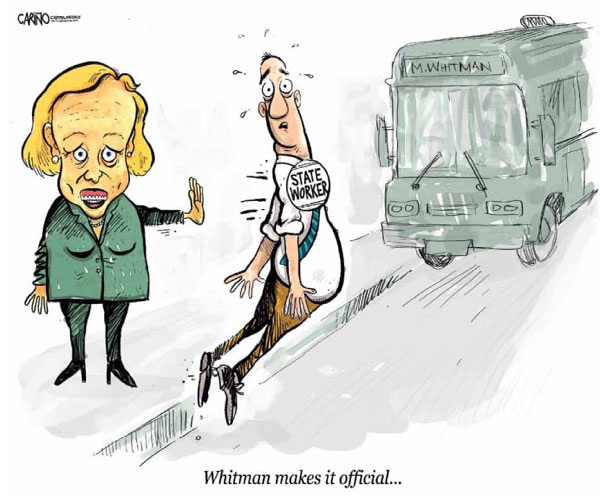Locking Up Profits in Private Prisons
by Rich Duprey - August 25, 2009 - 0 comments
The reports were chilling. Some 1,300 inmates in seven barracks rioted in
Chino's California Institution for Men, setting fire to the facility and
injuring 250 prisoners earlier this month.
Kentucky's medium-security Northpoint Training Center suffered a similar
fiery melee just last week. Our prisons are bursting at the seams,
overcrowded to the point of instability. But a private solution may help
ease this crisis -- and offer investors an opportunity to profit.
Prisons on lockdown
With 158,000 inmates, California's prisons are recognized as the nation's
most overcrowded. Los Angeles County has the largest daily jail
population, ahead of Harris County, Texas, and even New York City.
Federal judges recently ruled that the state must reduce its inmate count
by 43,000 over the next two years.
California isn't alone. One in every 31 adults in the U.S. is either in
federal, state, or local prison, or is being monitored on probation or
parole. The U.S. has the world's largest prison population, with the
federal prison system was operating 36% above its capacity at the end of
2007. The situation at Chino was even worse: 5,900 prisoners were housed
in a facility meant for 3,000.
Unfortunately, crime will always be with us, and criminals will need to be
housed. That's usually meant that governments construct and run new
prisons. State spending on corrections increased 300% over the past two
decades, but when states like California are facing bankruptcy, it's not
feasible to expect them to finance more construction.
Instead, we may see them turn to private correction and detention
facilities in greater numbers, like those run by Corrections Corp of
America (NYSE: CXW), Cornell Companies (NYSE: CRN), Geo Group (NYSE: GEO),
and G4S.
Corrections Corp of America is the country's largest private prison
operator, with 65 jails and detention facilities in 19 states. Its
facilities have a capacity for 86,500 inmates and typically operate at
more than 95% of capacity. In fact, only the federal government and three
states run bigger prison systems. CCA generated 45% of its total revenue
of nearly $1.6 billion from state contracts in 2008 (and 39% from federal
contracts). Geo Group, the second-largest operator, had $711 million in
U.S. revenue. No. 3 Cornell had $386.7 million in total 2008 revenue.
Manhunt for value
Crime remains a growth industry, but the correction industry has enjoyed
some phenomenal growth, too, which ought to seize investors' enthusiasm.
CCA shares have almost doubled over the past six months, while Geo is up
44% and Cornell 43%. Yet all are trading at or below their five-year
average market multiples.
With favorable industry demographics for the long term, analysts expect
CCA and Cornell to grow by 11% and 12% per year over the next five years,
respectively. They foresee Geo Group growing at a more robust 16% clip per
year. This gives Geo Group a PEG ratio of 0.85, lower than the 1.52 for
CCA and the 1.02 for Cornell. All three companies are well below the S&P
500's 2.1 average.
These private jailers look tempting, particularly in relation to industry
trends. Private prisons housed 7.8% of the country's 1.61 million
incarcerated adults in federal and state prisons as of the middle of 2008,
up from 7.4% in 2007, according to the Bureau of Justice Statistics. With
the U.S. expecting more than 1.7 million men and women in prison by 2011
(a 13% jump from 2007, according to a study by the Pew Center on the
States), the growing cost of those incarcerations may force states to
increasingly turn to private companies. By outsourcing incarceration
services, a government could reduce the cost of housing those prisoners by
10% to 20%.
The big breakout
A difficult recession; budgetary constraints by local, state, and federal
authorities; no end to the supply of "guests;" and cost savings offered by
the for-profit proprietors all point to the possibility that investors
could lock up good, long-term returns with these companies.
While CCA, as the Big House of the three, ought to command a premium for
its shares, I find Geo Group the most attractive right now. Its financials
offer comparable metrics at a better price. Geo has a strong balance
sheet, and while its operating margin isn't as good as CCA's, Geo Group
has enjoyed superior compounded revenue growth over the past five years.
If I were to make a break for it with just one private jailer today, it
would be Geo Group. Head over to Motley Fool CAPS and take a peek at what
other Fools think about the company; it could make a worthy inmate in your
portfolio.
Copyright 2009 by United Press International.

![]()



























No comments:
Post a Comment